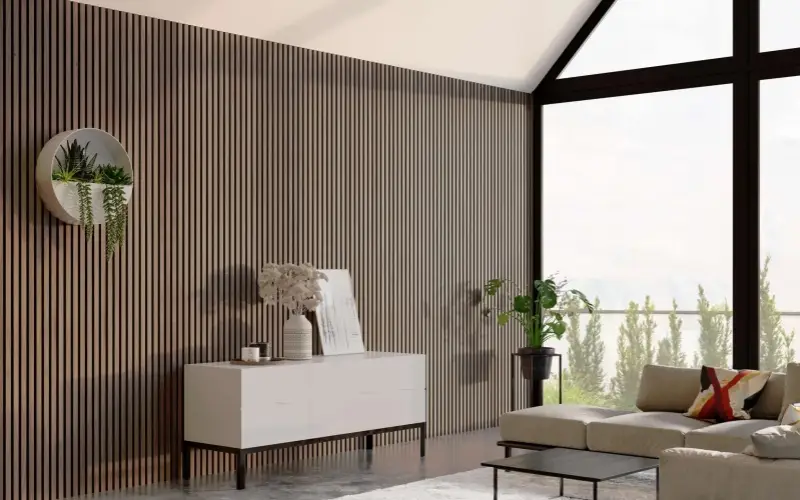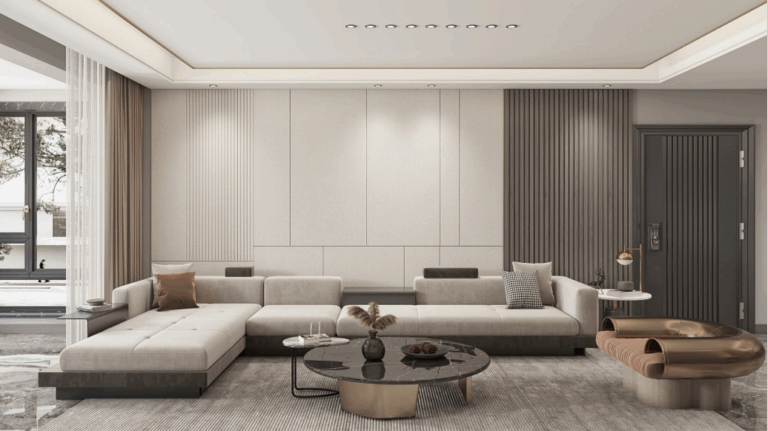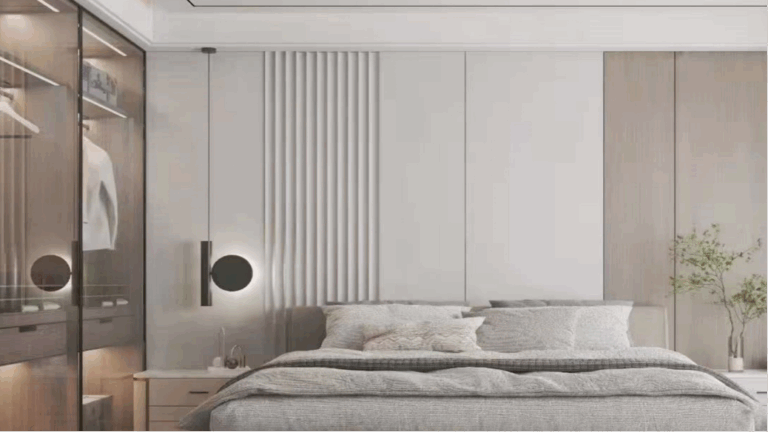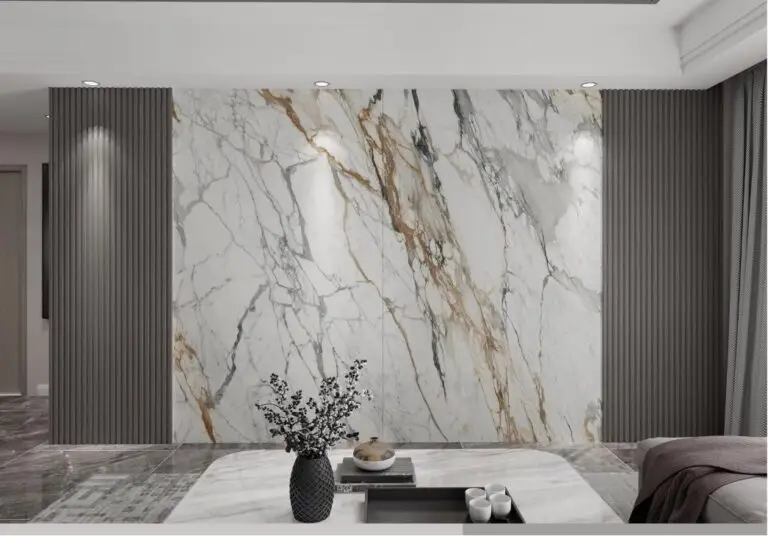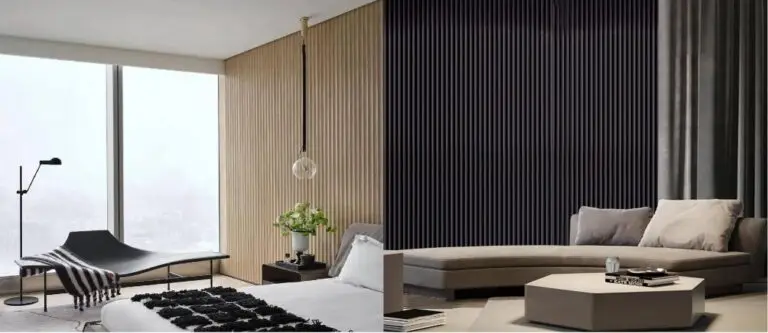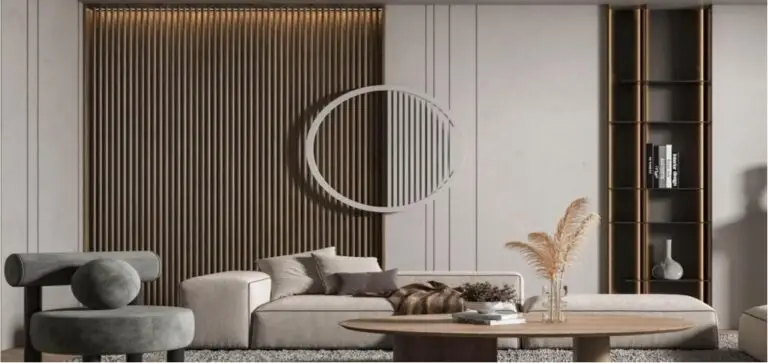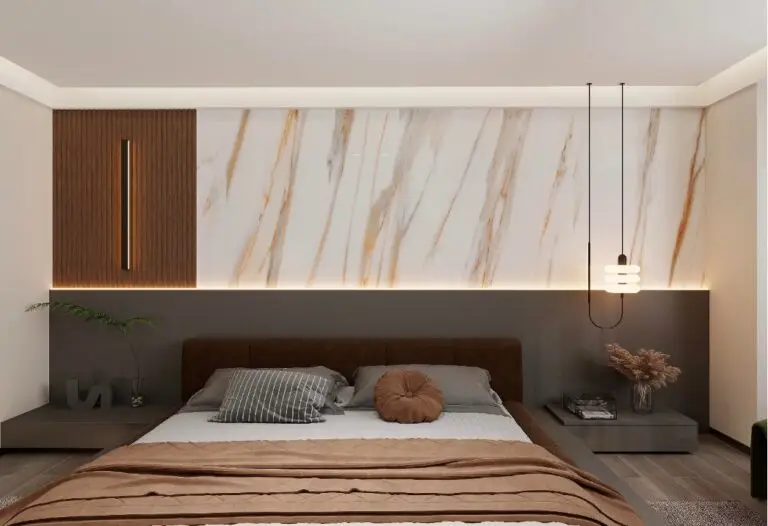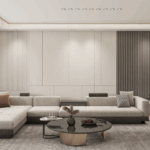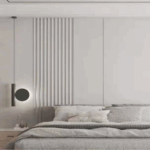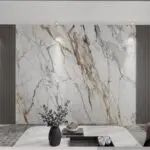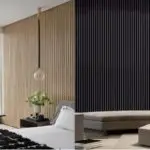The sound absorption coefficient (NRC) and sound insulation coefficient (such as STC) of AKU acoustic panels are intrinsically linked to the parameters of their surface slat-arranged decorative panels, including gap width, depth, and arrangement density. This relationship is critical for optimizing acoustic performance.
Sound Absorption Coefficient (NRC) and Surface Slat Arrangement
1. Enhanced Mid-to-High Frequency Absorption
The arrangement of surface slats creates an air layer behind the decorative panel. According to the Helmholtz Resonance Principle, the combination of gap width and depth can form a resonator-like structure, tuned to specific frequencies (typically mid-to-high frequencies), thereby enhancing the absorption of sound waves within that range. For example, when the gap width is small (e.g., 3-5mm) and the depth is shallow (e.g., 5-10mm), the resonance frequency is higher, significantly improving the absorption of high-frequency sound waves above 2000Hz. This can further optimize the NRC value from a baseline of 0.6-0.9.
2. Improved Full-Frequency Absorption through Scattering Effect
The uneven structure of the slat gaps scatters sound waves, increasing their reflection paths on the material’s surface and extending their propagation time within the material. This enhances sound absorption efficiency across the entire frequency range, especially for mid-to-high frequencies. For instance, with a gap width of 10-15mm and high arrangement density, the sound wave scattering area increases, potentially raising the NRC value by 0.1-0.2.
3. Limitations in Low-Frequency Absorption
Due to the longer wavelengths of low-frequency sound waves, the air layer created by surface gaps alone struggles to absorb them effectively. The 9mm thick polyester fiber panel of AKU boards primarily handles low-frequency absorption. However, the surface gaps have limited impact on improving low-frequency NRC, usually requiring a combination with other structures (such as sound insulation cotton filling behind the panel) for optimization.
Sound Insulation Coefficient (STC) and Surface Slat Arrangement
1. Air Layer Enhances Mid-to-High Frequency Sound Insulation
The air layer formed by the slat gaps increases the “mass-air-mass” effect of the structure, improving sound insulation for mid-to-high frequencies (e.g., 1000-4000Hz). For example, with a gap width of 15-20mm and a depth of 10-15mm, the STC value can increase by 3-5dB. This is because the elastic deformation of the air layer buffers sound wave vibrations, reducing sound energy transmission.
2. Suppression of Coincidence Effect
The slat gaps on the decorative panel can break the material’s continuity, dispersing the impact of the coincidence effect. When the slat arrangement density is high (e.g., gap width ≤ 10mm), the depth of the coincidence dip (a drop in sound insulation) decreases. This prevents a significant reduction in sound insulation performance at specific frequencies, thereby improving the overall STC value.
3. Synergistic Effect on Low-Frequency Sound Insulation
While surface gaps contribute little directly to low-frequency sound insulation, their combination with the MDF substrate and polyester fiber layers forms a composite structure. This indirectly improves low-frequency sound insulation through the mass law (increasing surface density) and damping effect (reducing vibration transmission). For instance, with a gap width of 20-30mm and lower arrangement density, the STC can increase by 1-2dB in the 125-250Hz range.
Impact of Key Parameters
1. Gap Width (W)
- Sound Absorption: A smaller W leads to a higher resonance frequency and stronger high-frequency absorption (e.g., W=3-5mm improves sound absorption coefficient by 0.1-0.2 above 2000Hz).
- Sound Insulation: When W=15-20mm, the air layer thickness is optimal, providing the best mid-to-high frequency STC improvement (3-5dB). If W is too narrow (<10mm), the thin air layer can reduce sound insulation effectiveness.
2. Gap Depth (D)
- Sound Absorption: A larger D increases the resonance cavity volume, slightly enhancing low-frequency absorption (e.g., D=10-15mm improves 250Hz sound absorption coefficient by 0.05-0.1).
- Sound Insulation: When D=10-15mm, the air layer contributes most to mid-to-high frequency sound insulation. If D is too deep (>20mm), it may reduce structural rigidity, potentially decreasing low-frequency sound insulation.
3. Arrangement Density (P)
- Sound Absorption: A higher P (denser gaps) results in a more significant scattering effect, leading to more uniform full-frequency sound absorption improvement (e.g., P=80-100 slats/m can increase NRC by 0.1-0.2).
- Sound Insulation: When P=60-80 slats/m, it maintains air layer integrity while dispersing the coincidence effect, leading to the most significant STC improvement (2-4dB).
Practical Application Recommendations
-
High-Frequency Environments (e.g., Recording Studios): Choose a design with a gap width of 3-5mm, depth of 5-10mm, and arrangement density of 80-100 slats/m. This can boost NRC to 0.8-0.9 and increase STC by 4-6dB in the 2000-4000Hz range.
-
Mid-to-Low Frequency Environments (e.g., Offices): Adopt a structure with a gap width of 15-20mm, depth of 10-15mm, and arrangement density of 60-80 slats/m. This balances mid-to-low frequency absorption (NRC 0.6-0.7) and sound insulation (STC 30-35dB).
-
Optimizing with Composite Structures: Filling with 50mm thick glass wool behind the slat gaps can increase low-frequency STC by 5-8dB and NRC by 0.1-0.15. This is suitable for areas with high sound insulation requirements (e.g., conference rooms).
Important Considerations
1. Material Compatibility
The material of the decorative panel (e.g., solid wood, metal) must be compatible with the polyester fiber panel to avoid resonance frequency shifts due to stiffness differences. For instance, metal decorative panels may increase the resonance frequency, requiring a corresponding increase in gap depth to compensate.
2. Installation Process
The slat arrangement must be uniform, avoiding excessively large localized gaps that could allow sound waves to pass directly through. When using slot-in installation, ensure good sealing between panels to prevent sound leakage and maintain sound insulation effectiveness.
3. Test Verification
Before actual application, it is crucial to obtain specific NRC and STC data through laboratory tests (e.g., ASTM E413, ASTM E90) and adjust parameters based on environmental requirements.
By reasonably designing the parameters of the surface slat arrangement, AKU acoustic panels can optimize both sound absorption and sound insulation performance, meeting the acoustic needs of various scenarios.

